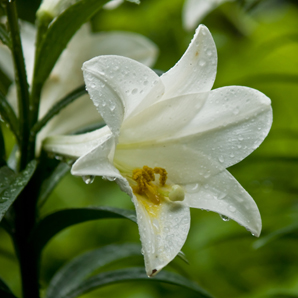All about Easter: Traditions and Trivia
Since its 2nd century AD beginnings, Easter has become the most significant Christian festival of the year, celebrating Jesus Christ’s resurrection three days after His crucifixion. Easter follows Lent, a 40-day preparation period of penance, prayer and fasting or giving up of vices. Key days in the Easter season are Good Friday, a statutory holiday commemorating Christ’s crucifixion day, and Easter Sunday, resurrection day.
Easter traditions include a candlelight vigil on Easter Sunday and a special church service called the Easter Eucharist.
Secular and commercial traditions have arisen out of Easter as well, such as children decorating Easter eggs and parents giving their children chocolate eggs and bunnies, or other types of candy.
For everyone, regardless of religious background, Easter is a time to celebrate family, spring and renewal.
Here are a few fun facts to share about this unique holiday as you follow traditions or create new ones:
Easter History and Trivia:
- Unlike most other holidays, Easter is a “moveable feast” as it is held on a different date every year between March 22 and April 25, following the Paschal full moon on or after March 21.
- The name, Easter, is believed by some sources to come from Eostra, the pagan goddess of spring and fertility, with Easter itself being a meld of Christian and pagan influences.
- The exact origins of the Easter bunny are unknown, but some sources believe the egg-laying Easter bunny myth originated in Pennsylvania in the 1700s with German immigrants who brought their tradition to America, and spread throughout the nation.
- The Easter tradition of exchanging eggs may go back to the ancient Greeks, Egyptians, Romans, Persians and Gauls, for whom the egg symbolized life.
- During Easter, Americans consume the second-greatest amount of candy, topped only by Halloween; little wonder, when 90 million chocolate Easter bunnies are produced in the US each year!

- The largest Easter egg in Canada, and until 2008, in the world, is a pysanka, a Ukranian-style Easter egg sculpture in Vegreville, Alberta, Canada. Created in 1975 to pay homage to the Ukranian immigrants in that region, it is 31 feet long and weighs 5512 pounds.
- The Easter Egg Roll is a yearly tradition that takes place on the front lawn of the White House. President Rutherford B. Hayes began this tradition in 1878 and it has run every year since then except for the World War I and World War II years
- Like other holidays, Easter has traditional foods, one of which is Easter pudding. Here's a simple recipe for you and your kids or grandkids to try.
- In Germany in the 1800s, courts of law recognized Easter eggs dyed and inscribed with an individual’s birth date and name as a legal birth certificate
- One theory of where the egg decorating tradition came from is that eggs were once forbidden during Lent, thus people would paint and decorate the eggs to represent the ending of Lent and the beginning of the Easter celebration. They would then eat them on Easter as a special treat. Spark your grandkids’ creativity and increase bonding time this Easter by decorating Easter eggs or doing other Easter crafts with them.
By Christelle Agboka
Christelle Agboka is a freelance writer based in Toronto and presently indulging her love of words as a book and magazine publishing student at Centennial College.
***


